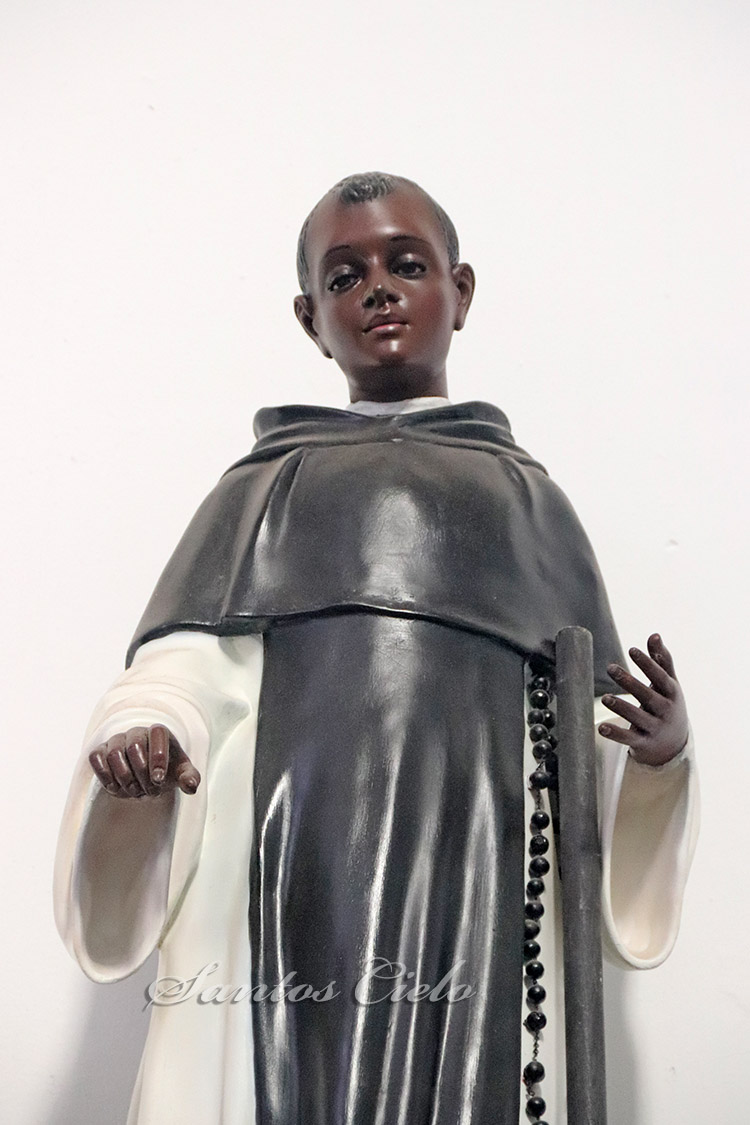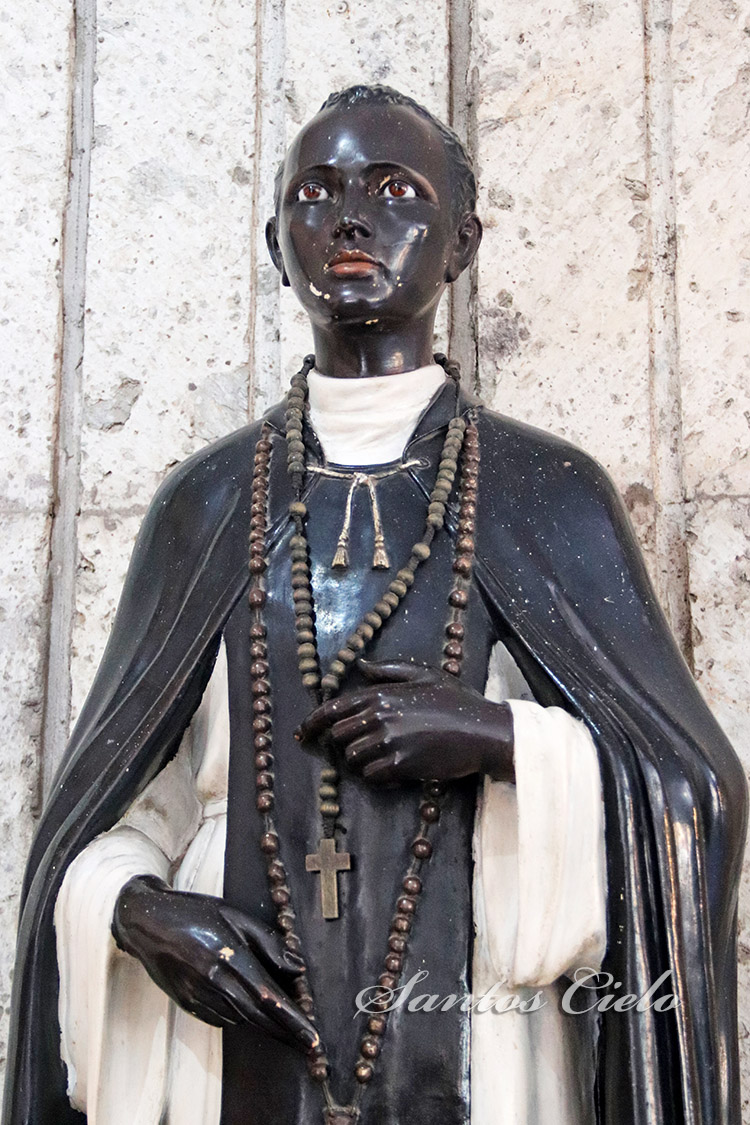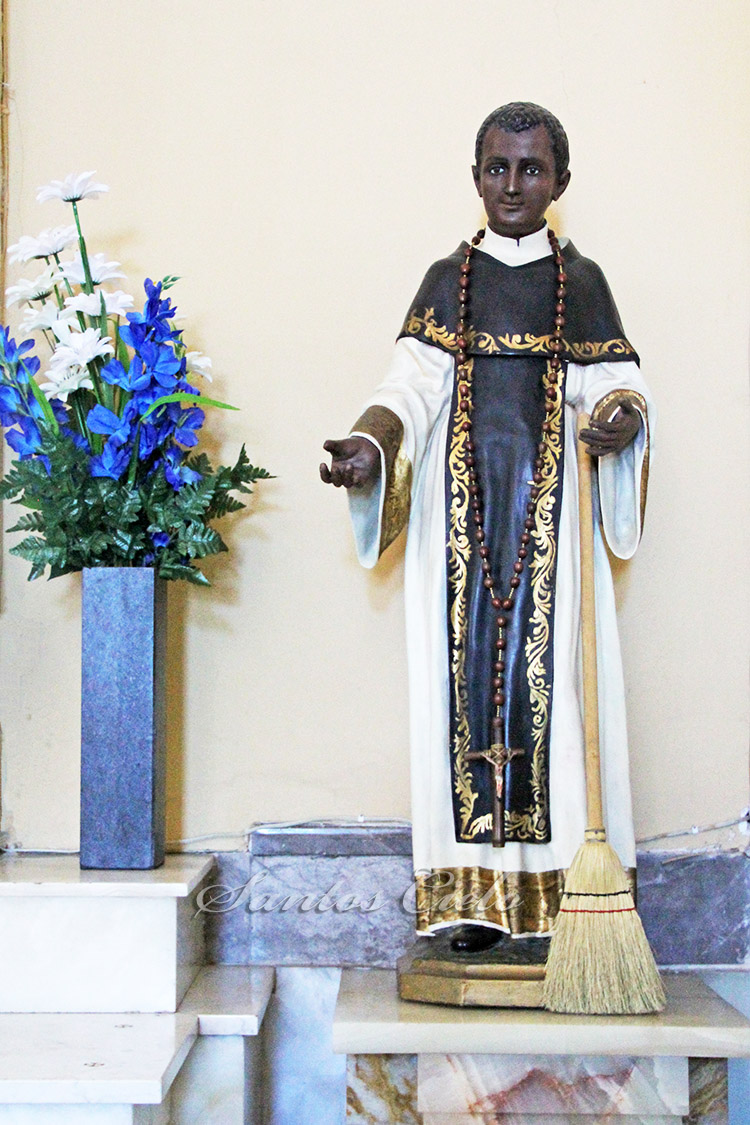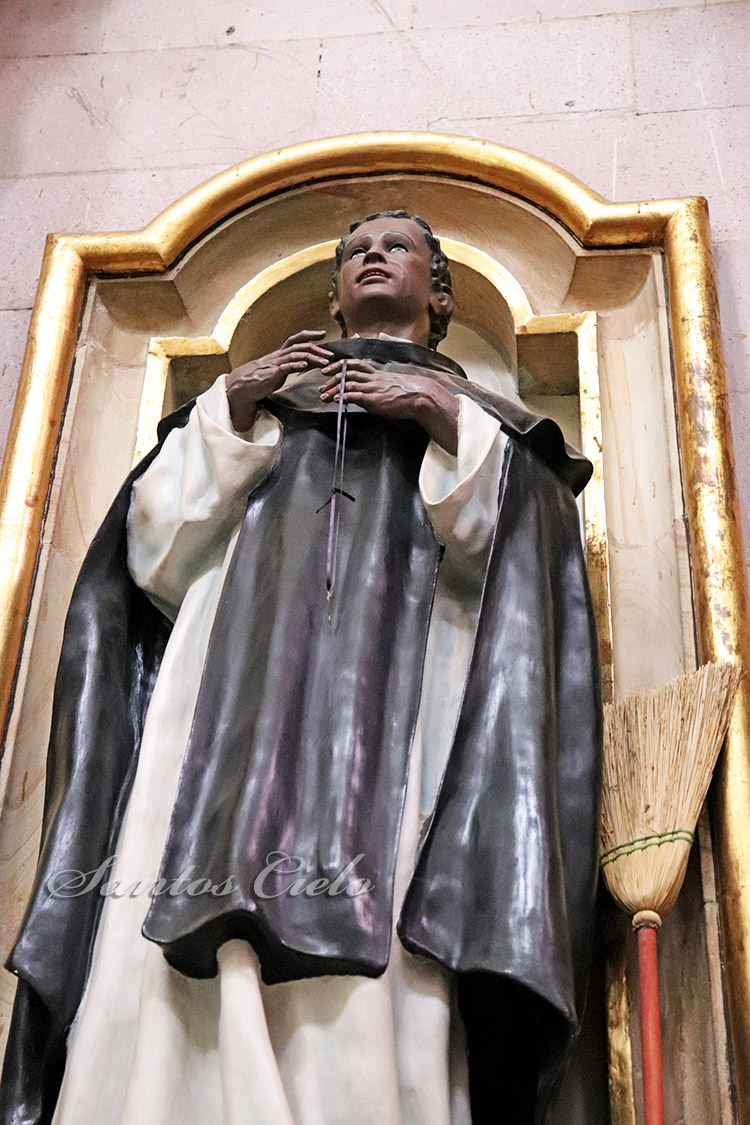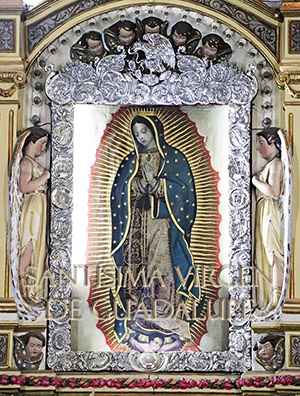Saint Martin of Porres
Saint Martin of Porres
Born: December 9, 1579 in Lima, Peru
Died: November 3, 1639 in Lima, Peru
Beatified: 1837 by Pope Gregory XVI
Canonized: May 6. 1962, by Pope John XXIII
Major shrine: Basilica and Convent of Santo Domingo, Lima, Peru
Feast day: November 3
Attributes: a dog, a cat, a bird, and a mouse eating together from a same dish; a broom, a crucifix, a rosary, a heart
Patronage: those seeking racial harmony, people of color, hair stylists, innkeepers, lottery, lottery winners, Peru, poor people, public education, public health, public schools, race relations, social justice, state schools, television, Mexico, Peruvian Naval Aviators, Diocese of Biloxi, Vietnam, Mississippi.
Peruvian Dominican lay brother Saint Martin of Porres Velázquez, O.P. was born on December 9, 1579 in Lima, Peru to a Spanish nobleman and a former black slave.
His father abandoned the family two years after Martin was born, and they lived in poverty. His mother could not afford to support him, so he was sent to primary school for two years and then to a surgeon and barber who taught him the medical arts.
At that time, he began spending several hours each night in prayer, a practice he continued throughout his life.
As a teen, Martin asked the Dominicans of Holy Rosary Priory in Lima to admit him as a donado, a volunteer who performs tasks in the monastery who is allowed to wear the religious habit and live in the community.
In 1594, at the age of 15, he was accepted as a servant by the Dominican Convent of the Holy Rosary in Lima. His duties there grew and he became the almoner, the person who distributes alms to the poor.
When he was a young man Peruvian law prohibited indigenous peoples and those of African descent from becoming full members of religious orders.
But after serving eight years at the Holy Rosary, its Prior Juan de Lorenzana ignored the law and permitted Martin to take his vows to the Third Order of Saint Dominic.
Not all of the brothers agreed with de Lorenzana’s decision, and Martin was called names like “a mulatto dog,” and was mocked for being illegitimate and being descended from slaves.
In 1603, at the age of 24, Martin professed his vows as a Dominican lay brother.
As a healer, several miracles were attributed to Martin. At the age of 34 he was put in charge of the infirmary, a position he would hold for the rest of his life.
Martin preached to people of all statuses, from newly arrived slaves to the Spanish nobility. It is said that one day an elderly man who was nearly naked and covered with ulcers stretched out his hand to Martin, who allowed the man to sleep in his own bed. He was criticized by another lay brother, to whom he replied that compassion is more important than cleanliness.
He would beg for alms for the poor and would often collect enough to feed more than 100 and distribute additional money to the needy.
In 1687 earthquakes shook Peru and an epidemic of illness followed. Sixty of the friars in the convent became ill and were sequestered in a locked area of the convent.
Martin is said to have passed through the locked doors to care for them and brought additional people affected by the sickness to the convent. When he was prevented from bringing more of the sick to the convent, his sister opened her country house to the suffering.
Martin of Porres was a vegetarian. He was said to have gifts of levitation, bilocation, instantaneous cures and to be able to communicate with animals.
And in addition to his other accomplishments, Martin established a home in Lima for abandoned children and orphans.
Martin of Porres died at the age of 59 on November 3, 1639 in Lima, Peru. His body was interred on the grounds of the monastery.
He was credited with so many miracles that his body was exhumed 25 years after his death. It was found to be incorrupt and had a pleasant aroma.
In 1763, after receiving several letters begging for Martin’s beatification, Pope Clement XIII affirmed the virtues of Martin of Porres and declared him Venerable.
Martin de Porres was beatified on October 29,1837. He was canonized a saint by Pope John XXIII on May 6, 1962.
Source: Wikipedia

